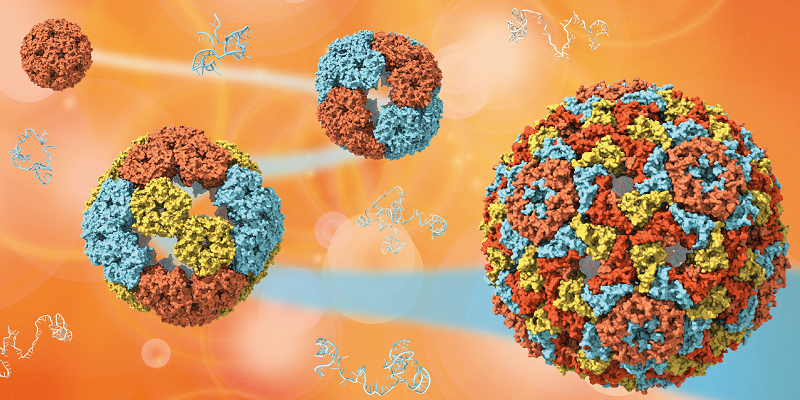Recreating a step in the evolution of viruses

An international team of researchers has shed new light on the way viruses evolved highly effective ways of spreading disease.
The scientists, involving a team from the universities of Leeds and York, believe understanding that key moment in the natural history of viruses may eventually help with the design of novel delivery mechanisms for gene therapies, where viruses are used to repair faulty genes.
Their findings - published in the journal Science - describes how viruses developed early in their evolutionary history a highly effective mechanism for getting their genetic code into other cells to infect them. The key to that process is the way genetic information is transported from the virus to the host cell – and that happens in a specialised protein container known as a capsid.
Read the full press release on the University of Leeds website
